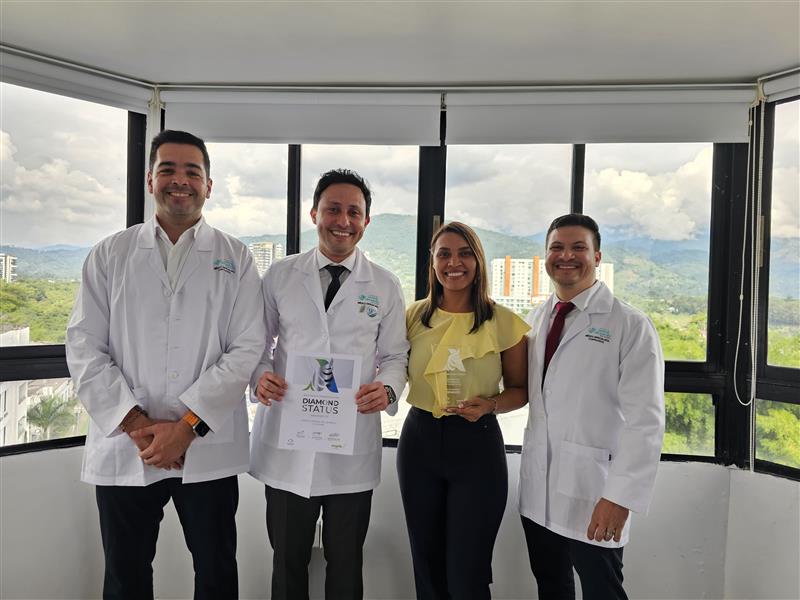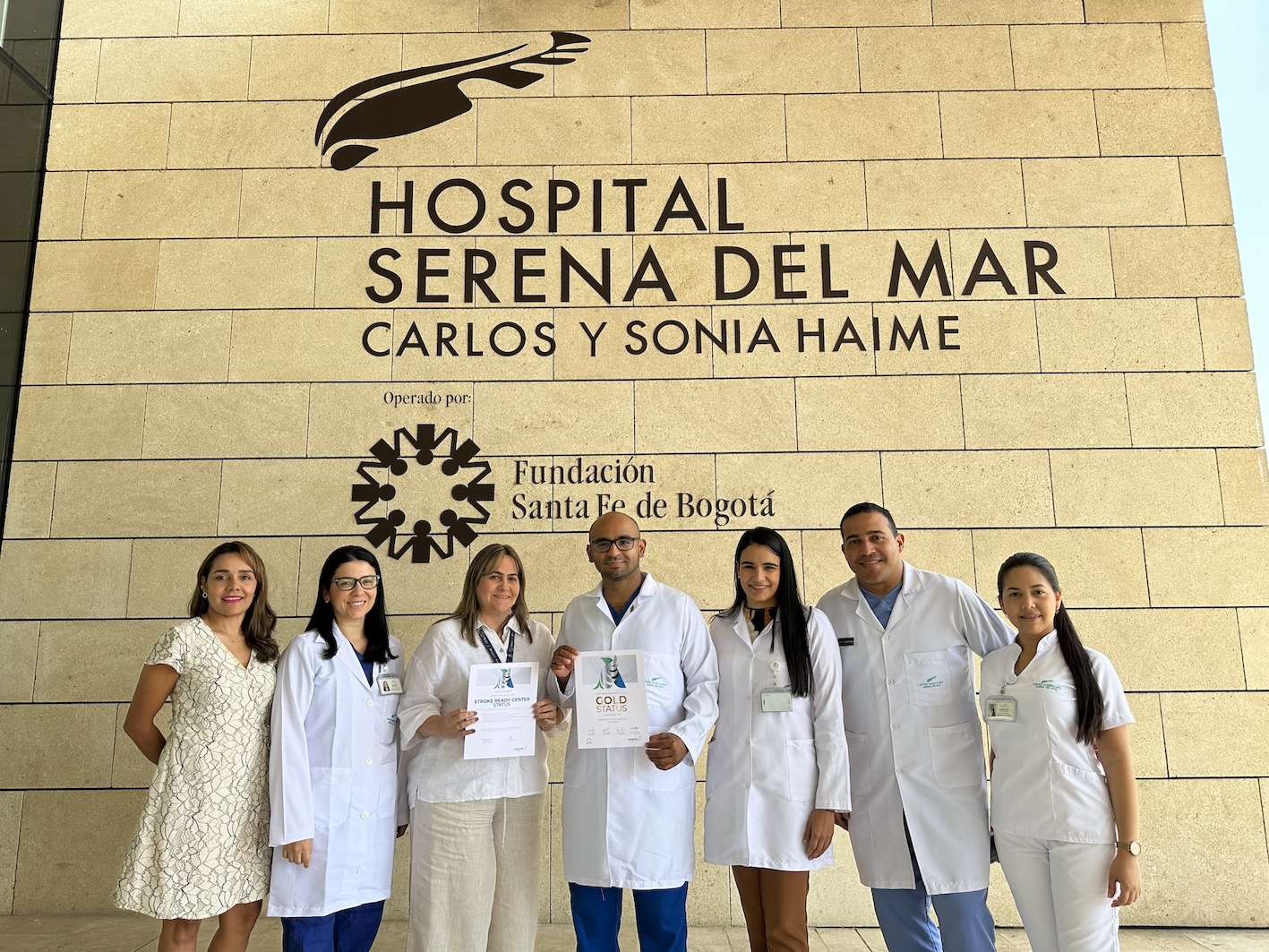Η πεταλούδα είναι ένα υπέροχο πλάσμα που αποκτά την όμορφη εμφάνισή της μόνο αφού περάσει από πολλά στάδια του κύκλου ζωής της. Κατά τη διάρκεια διαφόρων σταδίων, η πεταλούδα χρειάζεται αρκετά θρεπτικά συστατικά και υλικά για να αναπτυχθεί, καθώς και υποστήριξη από το περιβάλλον. Μπορούμε να παρατηρήσουμε σε ορισμένα νοσοκομεία έναν πολύ παρόμοιο «κύκλο ζωής». Ένα τέτοιο παράδειγμα για τη βελτίωση της ποιότητας της φροντίδα αγγειακού εγκεφαλικού επεισοδίου έχει βρεθεί στο Περιφερειακό Νοσοκομείο Píbram της Τσεχικής Δημοκρατίας.
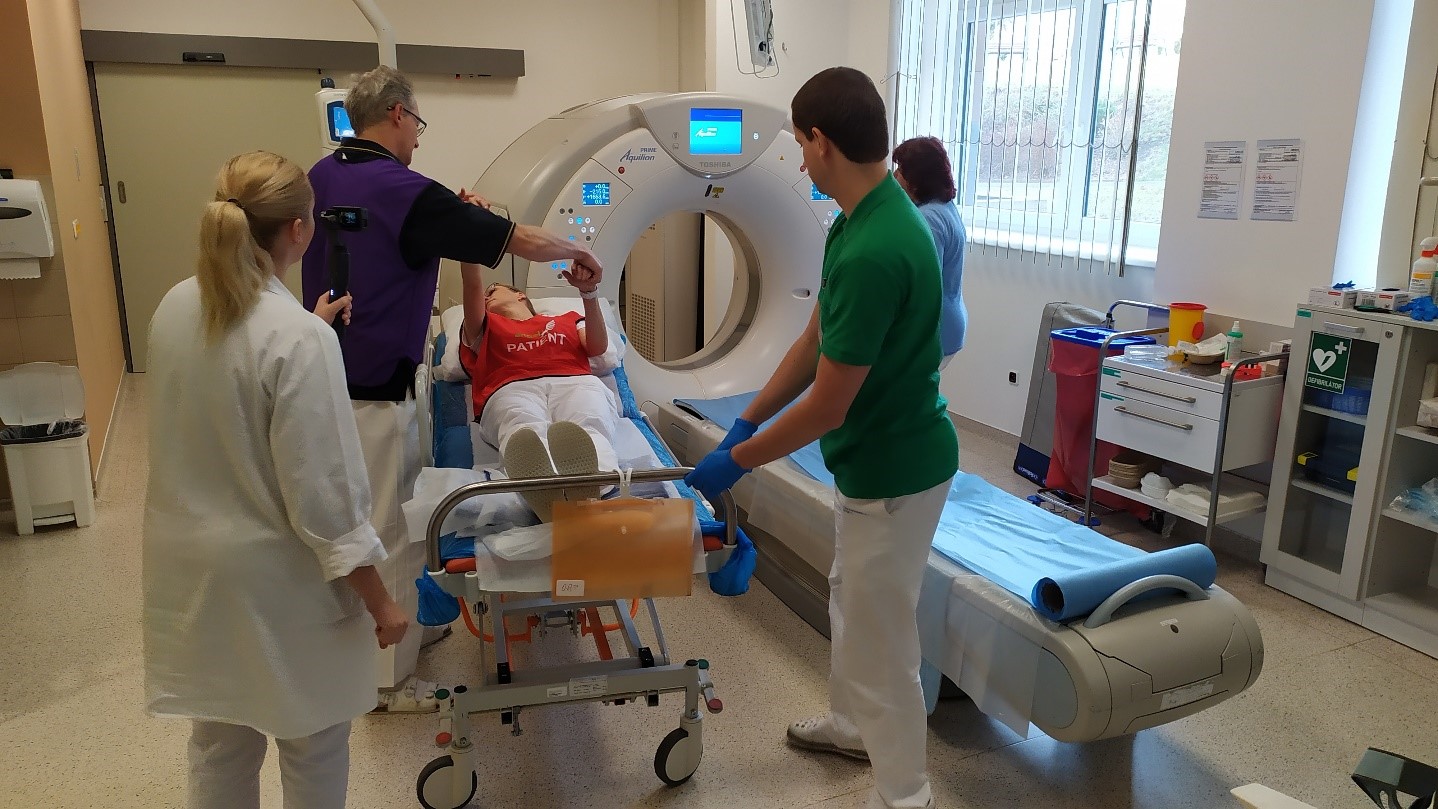
Εκπαίδευση προσομοίωσης με έναν ψεύτικο ασθενής με αγγειακό εγκεφαλικό επεισόδιο στο νοσοκομείο Píbram
Η ιστορία ξεκίνησε όταν το νοσοκομείο, μαζί με τον σύμβουλο της Πρωτοβουλία Angels, πραγματοποίησε δύο γύρους προσομοίωσης τον Ιανουάριο του 2020 με στόχο τη βελτίωση της φροντίδα αγγειακού εγκεφαλικού επεισοδίου επεισόδιο. Με βάση τις παρατηρήσεις από τις προσομοιώσεις, η ομάδα ετοίμασε και εισήγαγε ένα σχέδιο δράσης για τη βελτίωση της φροντίδα αγγειακού εγκεφαλικού επεισοδίου, ώστε να εξασκηθεί βήμα προς βήμα στις επόμενες εβδομάδες. Πρώτον, η βελτιστοποίηση της τοπικής προνοσοκομειακής φροντίδας φάνηκε να είναι ζωτικής σημασίας. Οι τροποποιήσεις επικεντρώθηκαν κυρίως στις ανάγκες και το περιεχόμενο της προ-ειδοποίησης, η οποία αποτελείται από την ανταλλαγή πληροφοριών μεταξύ του νευρολογικού τμήματος και των επαγγελματιών του ιατρικές υπηρεσίες για επείγοντα περιστατικά πριν από την άφιξη ενός ασθενής με αγγειακό εγκεφαλικό επεισόδιο επεισόδιο στο κέντρο του αγγειακό εγκεφαλικό επεισόδιο.
Μια διεπιστημονική συνάντηση ήταν σημαντική για τον καθορισμό ρόλων για όλα τα εμπλεκόμενα τμήματα: το τοπικό ιατρικές υπηρεσίες για επείγοντα περιστατικά, τη ΜΕΘ, το τμήμα επειγόντων περιστατικών, το ακτινολογικό και νευρολογικό τμήμα και τη διοίκηση του νοσοκομείου. Έκτοτε, οι επαγγελματίες του τομέα ιατρικές υπηρεσίες για επείγοντα περιστατικά προ-ειδοποιούν το κέντρο αγγειακό εγκεφαλικό επεισόδιο επεισοδίων σύμφωνα με δομημένες κλήσεις που περιέχουν όλες τις σχετικές πληροφορίες σχετικά με τους ασθενείς για τους οποίους υπάρχει υποψία εγκεφαλικού αγγειακό εγκεφαλικό επεισόδιο, γεγονός που επιτρέπει την προετοιμασία ολόκληρης της ομάδας αγγειακό εγκεφαλικό επεισόδιο επεισοδίων και την αξονική τομογραφία πριν από την άφιξη του ασθενής. Παραϊατρικά συνοδεύουν τον ασθενής απευθείας στην CT τομογραφία αμέσως μετά την άφιξη και παραμένουν διαθέσιμα για δευτερεύουσα μεταφορά σε περίπτωση που ο ασθενής ενδείκνυται περαιτέρω θεραπευτική αντιμετώπιση στο μεγαλύτερο ολοκληρωμένο κέντρο αγγειακό εγκεφαλικό επεισόδιο εγκεφαλικών επεισοδίων. Αυτές οι υλοποιήσεις μειώνουν σημαντικά τον χρόνο που απαιτείται για τη διάγνωση και την έναρξη της θεραπεία. Ο Δρ. Jaroslav Machovsk, επικεφαλής του τοπικού ιατρικές υπηρεσίες για επείγοντα περιστατικά, αναγνωρίζει τη συνεργασία:
«Εφαρμόστηκαν σημαντικά απλοποιημένες τροποποιήσεις και βελτιώθηκε η φροντίδα αγγειακού εγκεφαλικού επεισοδίου σε ολόκληρη την περιοχή. Οι ασθενείς με εγκεφαλικό επεισόδιο επωφελούνται περισσότερο επειδή οι επαγγελματίες του ιατρικές υπηρεσίες για επείγοντα περιστατικά επικοινωνούν κάθε περιστατικό απευθείας με τον νευρολόγος από το κέντρο του αγγειακό εγκεφαλικό επεισόδιο γεγονός που αυξάνει την ποιότητα της προνοσοκομειακής φροντίδας, ειδικά όσον αφορά την περαιτέρω κατεύθυνση του ασθενής. Επιπλέον, αλλά εξίσου σημαντικό, η επίδραση της ιατρικές υπηρεσίες για επείγοντα περιστατικά και της συνεργασίας στο νοσοκομείο είναι η αμοιβαία βελτίωση της συνεργασίας μεταξύ παραϊατρικών και νοσοκομειακού προσωπικού.»
Σημειώθηκε επίσης μια θεμελιώδης αλλαγή ως προς το φόρτο εργασίας των Νοσηλευτών του Τμήματος Επειγόντων Περιστατικών. Οι νοσηλευτές συμβάλλουν ενεργά στη θεραπευτική αντιμετώπιση του οξύ αγγειακό εγκεφαλικό επεισόδιο τώρα σε σύγκριση με τον κυρίως διοικητικό ρόλο που κατείχαν στο παρελθόν.
Μεγ. Η Lenka Pátková, επικεφαλής νοσηλευτικό προσωπικό του Τμήματος Επειγόντων Περιστατικών, αντιδρά:
«Με βάση τις συστάσεις που προκύπτουν από την εκπαίδευση με προσομοίωση, έχουμε εφαρμόσει διάφορες αλλαγές κατά τη διάρκεια της εισαγωγής για ασθενείς με αγγειακό εγκεφαλικό επεισόδιο. Επί του παρόντος, οι νοσηλευτές είναι καλά ενημερωμένοι σχετικά με την ώρα άφιξης των ασθενής από επαγγελματίες ιατρικές υπηρεσίες για επείγοντα περιστατικά μέσω του νευρολόγος. Οι νοσηλευτές συνοδεύουν τους ασθενείς απευθείας και στην CT, όπου αραιώνουν και χορηγούν τη θεραπευτική αντιμετώπιση. Επίσης, η συνάντηση ανταλλαγής εμπειριών πραγματοποιήθηκε πριν από την εισαγωγή των τροποποιήσεων της διαδρομή αγγειακό εγκεφαλικό επεισόδιονοσηλευτικό προσωπικό Μεγ. Η Tereza Koláčná, έμπειρη νοσηλευτικό προσωπικό του ολοκληρωμένου κέντρου αγγειακό εγκεφαλικό επεισόδιο επεισοδίων στο Πανεπιστημιακό Νοσοκομείο Motol, μας κοινοποίησε την εργασιακή εμπειρία με τη φροντίδα νοσηλευτών για οξέα και μετα-οξύ αγγειακό εγκεφαλικό επεισόδιο επεισόδια. Στη συνέχεια, συμπληρώθηκε από μια πρακτική εκπαίδευση σχετικά με τον τρόπο σωστής χορήγησης της θεραπευτική αντιμετώπιση»
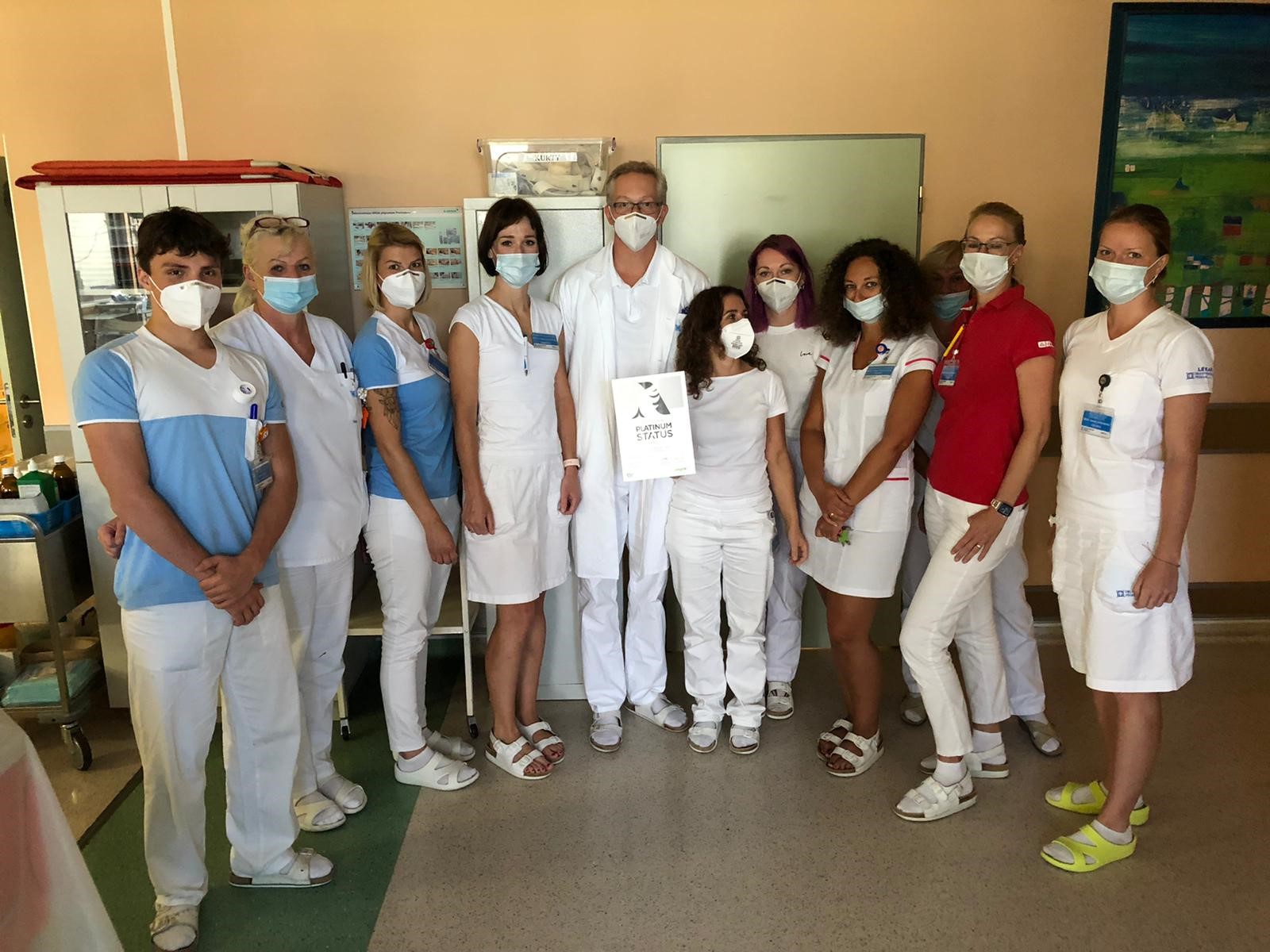
Οι ακτινολόγοι εξετάζουν τώρα ασθενείς με αγγειακό εγκεφαλικό επεισόδιο με ύψιστη προτεραιότητα και διαδραματίζουν σημαντικό ρόλο στη διάγνωση του οξύ αγγειακό εγκεφαλικό επεισόδιο. Επί του παρόντος, η χορήγηση της θεραπευτική αντιμετώπιση ενεργοποιείται μέσα στην αίθουσα της CT τομογραφίας αμέσως μετά την αξονική τομογραφία. Η παρουσία τους κατά τη διάρκεια μιας απεικονιστικής εξέτασης μπορεί επίσης να επιδεινώσει σημαντικά και να καθορίσει τους εξορθολογισμούς για τη δευτερεύουσα μεταφορά, εάν απαιτείται.
Υπάρχει ένα ζωτικό κομμάτι στο συντονισμό ολόκληρης της διεπιστημονικής ομάδας αγγειακό εγκεφαλικό επεισόδιο στην επιλογή της θεραπευτική αντιμετώπιση. Βασίζεται στις σωστές αποφάσεις του υπεύθυνου Νευρολόγου. Η Δρ. Helena Hlaváčová, Προϊσταμένη του Νευρολογικού Τμήματος, συγκρίνει τα αποτελέσματα της ποιότητας της φροντίδα αγγειακού εγκεφαλικού επεισοδίου επεισοδίων:
«Μπορούμε να συγκρίνουμε τα δεδομένα πριν και μετά τη βελτιστοποίηση της διαδρομή αγγειακό εγκεφαλικό επεισόδιο χρησιμοποιώντας τις εθνικές αναφορές του μητρώου RES-Q. Ενώ ο μέσος χρόνος χορήγησης της θεραπευτική αντιμετώπιση - ο λεγόμενος χρόνος από πόρτα σε βελόνα (DTN), ένας βασικός δείκτης της ποιότητας της νοσοκομειακής φροντίδα αγγειακού εγκεφαλικού επεισοδίου επεισόδια, ήταν 60 λεπτά πριν από τη βελτιστοποίηση της διαδρομή του αγγειακό εγκεφαλικό επεισόδιο. Τον Μάρτιο του 2020, μετά τη βελτιστοποίηση της διαδρομή, ο μέσος όρος DTN έπεσε δραματικά στα 21 λεπτά. Έτσι, το Νοσοκομείο Píbram μετακινήθηκε από την τελευταία θέση σε τιμή πάνω από το μέσο όρο ολόκληρης της Τσεχικής Δημοκρατίας σε μόλις λίγες εβδομάδες».
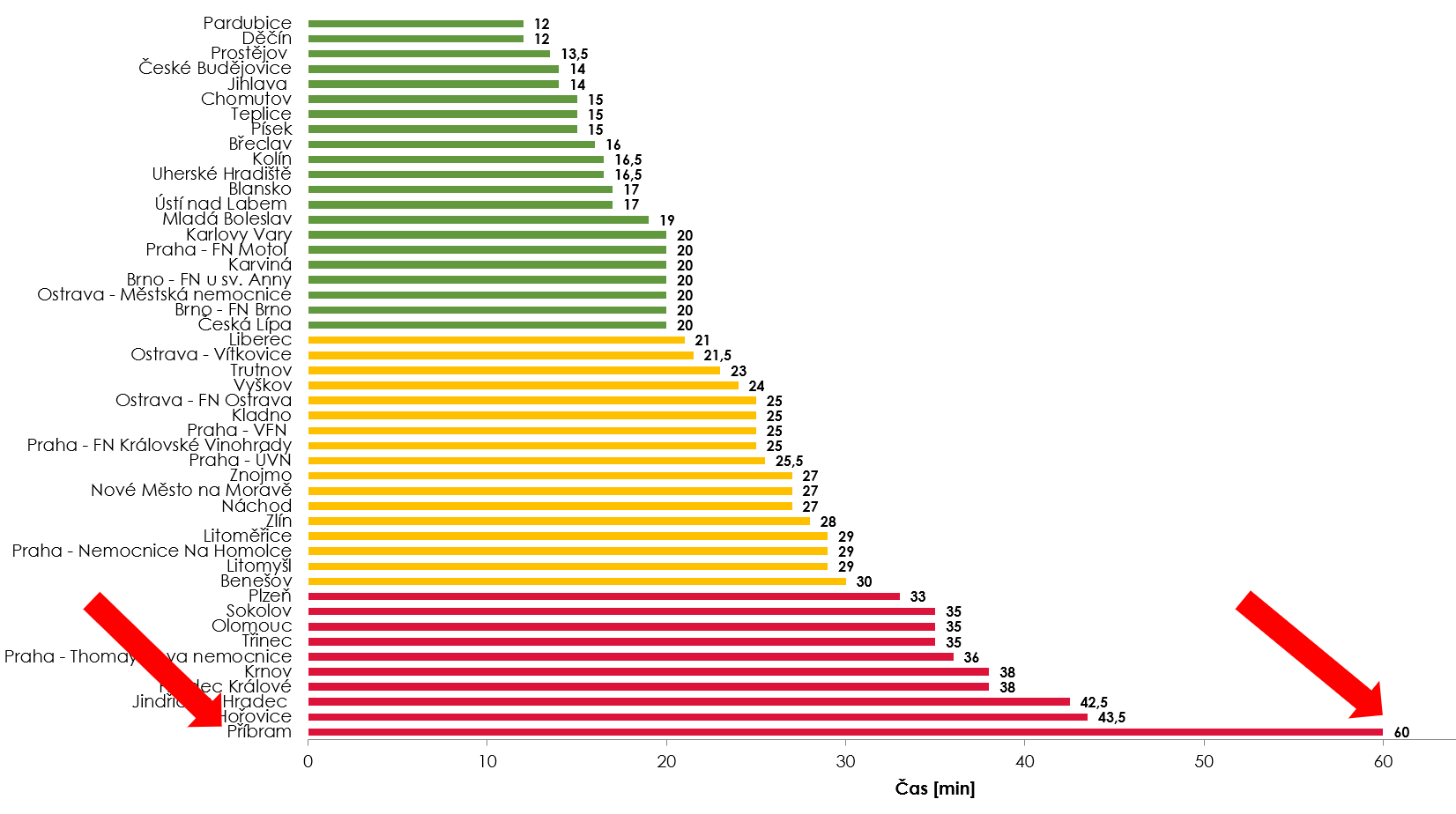
Χρόνος από πόρτα σε βελόνα (χορήγηση IVT) στην εθνική αναφορά RES-Q πριν από τη βελτιστοποίηση της διαδρομή
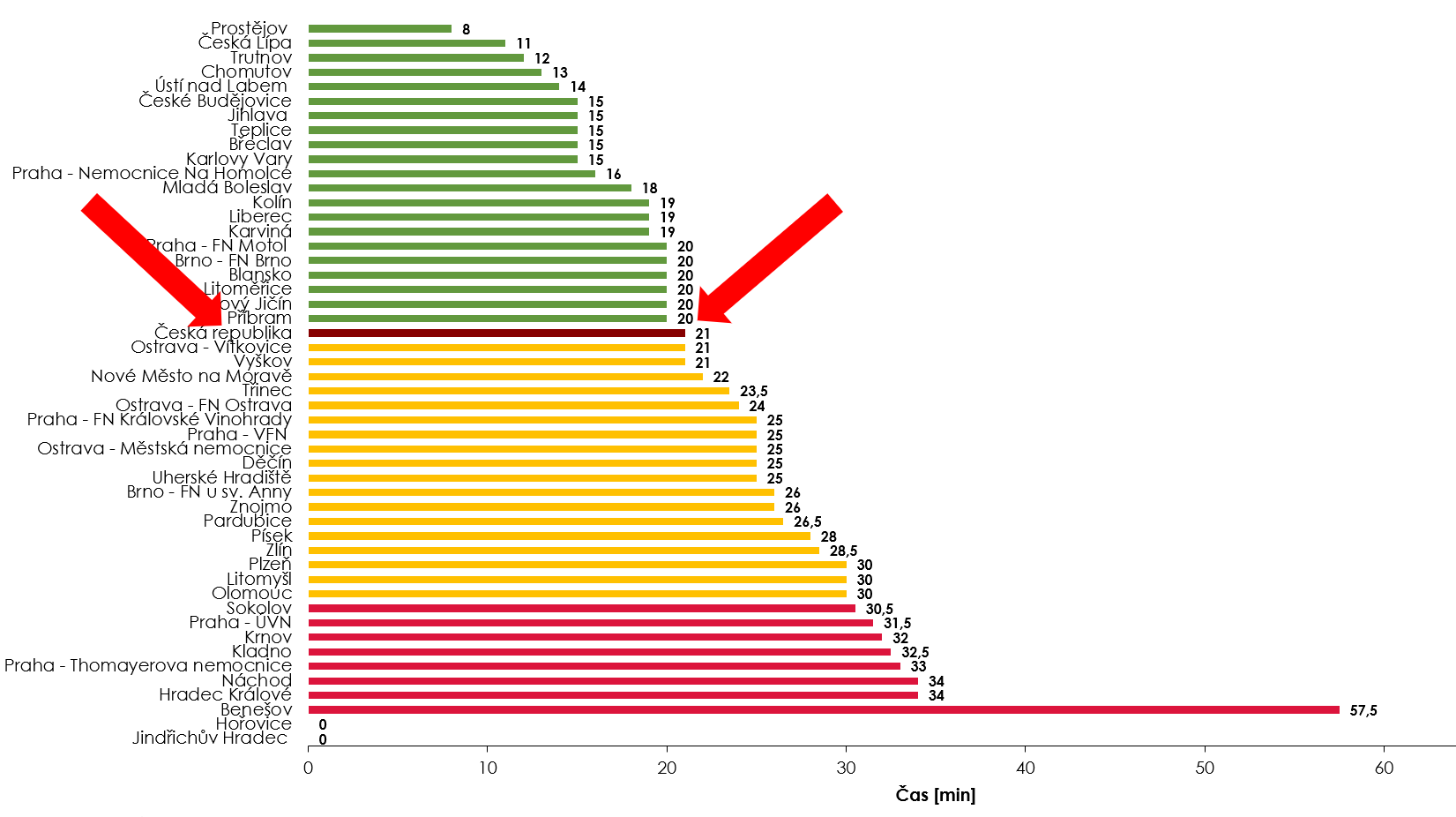
Χρόνος από πόρτα σε βελόνα (χορήγηση IVT) στην εθνική αναφορά RES-Q μετά τη βελτιστοποίηση της διαδρομή
Το οικονομικό κόστος για μια τέτοια δραματική βελτίωση είναι εξαιρετικά χαμηλό - μόνο μία παρακλίνια οθόνη πήξης και ένας αυτόματος εγχυτήρας. Υπήρχαν πολλές απαραίτητες σημαντικές αλλαγές: η αλλαγή στις υπάρχουσες διαδικασίες, στη νοοτροπία των ανθρώπων και στην επιθυμία όλων των παραπάνω να συμμετάσχουν ενεργά. Είμαστε τυχεροί που είμαστε το ακροατήριο της σταδιακής ανάπτυξης αυτής της παραδειγματικής περίπτωσης «πεταλούδας» του νοσοκομείου Píbram, όπου σημαντική βελτίωση στην ποιότητα της φροντίδα αγγειακού εγκεφαλικού επεισοδίου επιτεύχθηκε μόνο με την επιθυμία για αλλαγή. Η αλλαγή στην οποία οι ασθενείς επωφελούνται περισσότερο.


